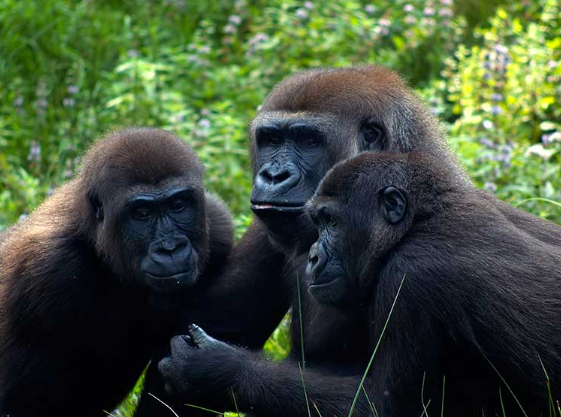Title: How Do Gorillas Solve Conflicts Within the Group?
Introduction
Understanding how gorillas manage conflicts within their social groups is not only fascinating but also sheds light on broader themes of animal behavior and communication. These magnificent creatures exhibit complex social structures and interactions, making their conflict resolution strategies both intriguing and educational.
The Role of Social Hierarchy
Gorilla groups are typically organized around a clear social hierarchy, with a dominant male, known as the silverback, at the top. This structure is crucial during conflicts, as the silverback often steps in to mediate disputes. By asserting his authority, he helps maintain harmony and order, preventing escalations into violence. Other group members respect this hierarchy, which allows for smooth conflict resolution, as individuals understand their roles and the consequences of challenging the silverback.
Non-verbal Communication
Gorillas primarily rely on non-verbal cues to communicate, which plays a significant role in resolving conflicts. Body language, facial expressions, and vocalizations are all part of their toolkit. For instance, a gorilla may display submissive postures or perform calming gestures, such as grooming another individual, to ease tensions. These actions convey peaceful intentions, allowing for reconciliation and understanding within the group. This strong emphasis on non-verbal communication enhances their ability to resolve conflicts without resorting to aggression.
Grooming as a Conflict Resolution Strategy
Grooming is more than just a hygiene practice for gorillas; it is a vital social activity that fosters bonds and alleviates stress within the group. After a conflict, grooming often serves as a reconciliatory gesture. By engaging in this behavior, individuals can rebuild trust and restore relationships. This strategy not only helps to resolve immediate tensions but strengthens social ties, promoting long-term group cohesion. The act of grooming demonstrates the importance of empathy and social bonds in creating a peaceful group dynamic.
Conclusion
Gorillas have developed sophisticated methods for resolving conflicts that offer valuable insights into social behavior and communication. By understanding their hierarchical structures, non-verbal communication techniques, and the significance of grooming, we can appreciate the complexities of their social interactions. If you’re curious to learn more about these remarkable creatures and their behavior, consider exploring further into their world.

